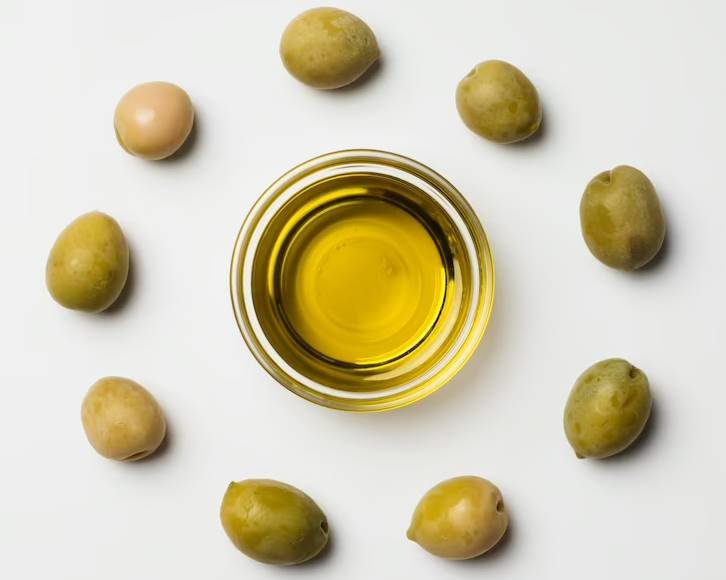If you want to ensure you are purchasing high-quality, authentic olive oil, there are several key factors to consider. When shopping, prioritize bottles labeled “extra virgin” and always check for a recent harvest date to guarantee freshness. Conduct a taste test to look for vibrant, peppery flavors indicative of authentic olive oil. Pay attention to the color and material of the bottle, the geography of the olive oil, visible quality indicators like PDO or PGI seals, and the price point. By following these guidelines, you can confidently spot fake olive oil and make informed purchasing decisions.
Key Takeaways:
- Spot Authenticity: Look for bottles labeled “extra virgin” and ensure the harvest date is within the last 12-14 months.
- The Harvest Date Matters: Check for bottles with a recent harvest date to guarantee freshness and quality.
- Do a Taste Test: Authentic olive oil should have a lively, peppery flavor, while fake ones may taste flat or greasy.
- Consider Bottle Material: Choose olive oil packaged in dark glass bottles to protect it from light and heat.
- Quality Indicators: Look for seals like PDO or PGI on the label, indicating adherence to strict quality standards.

How to Spot Fake Olive Oil?
Spotting Authenticity
Your first step in identifying fake olive oil should be to prioritize bottles labeled as “extra virgin.” Look for terms like “pure,” “light,” or “cold-pressed” which often lack industry standards. By choosing “extra virgin,” you are opting for a safer choice. Ensure the bottle displays a harvest date within the last 12-14 months to guarantee freshness. Authentic olive oils will have a lively, peppery flavor due to the presence of polyphenols, so be on the lookout for this vibrancy. Perceiving a flat, greasy, or waxy taste may indicate a fake product.
Harvest Date
When selecting olive oil, be sure to check for the display of the harvest date on the bottle. Look for a date from the past twelve to fourteen months to ensure freshness. Beware of bottles without a date or those with older ones, as they might indicate lower quality or mislabeling. Authentic olive oils will have a vibrant flavor while fake ones may taste flat or greasy. Understanding the importance of the harvest date will help you spot fake olive oil more effectively.
Do a Taste Test
While it may not be foolproof, a taste test can help you identify fake olive oil. Authentic olive oils have a lively, peppery flavor thanks to polyphenols, whereas fake oils may taste flat, greasy, or develop a waxy, crayon-like flavor. Assume that a lack of vibrancy in taste could signal a counterfeit product.
Color and Material of Bottle
For higher-quality olive oil, look for bottles packaged in dark glass to protect the oil from harmful effects of light and heat. Plastic containers should be avoided to prevent leaching of undesirable compounds. Authentic bottles will have visible indicators of quality, such as PDO or PGI seals, and will likely be priced higher due to meticulous production processes.
Geography of Olive Oil
To truly assess the quality of olive oil, consider the geography of its origin. Look for details such as the specific region where the olives were cultivated, the olive varietals used, and any flavor profiles or additional notes provided on the bottle. Olive oils that offer this level of specificity are generally more reliable and less likely to be adulterated with fillers or lower-quality oils.
Quality Indication
Now, when examining the quality of olive oil, pay attention to visible indicators such as PDO (Protected Designation of Origin) or PGI (Protected Geographical Indication) seals prominently displayed on the label. These seals serve as strong assurances of adherence to stringent quality and authenticity standards.
To wrap up
With these considerations in mind, you can now confidently navigate olive oil and distinguish the authentic from the fake. Remember to prioritize bottles labeled “extra virgin” and check for a harvest date within the last 12-14 months to ensure freshness. Pay attention to the taste, ensuring it is lively, peppery, and free from any flat or greasy notes that may indicate a counterfeit product.
Be mindful of the color and material of the bottle, opting for dark glass over plastic to protect the oil from damage. Consider the geography of the olive oil, looking for specific details on cultivation and varietals used. Look for quality indications such as PDO or PGI seals on the label, and remember that a higher price may indicate a higher quality product due to the meticulous production processes involved. Armed with this knowledge, you can make informed choices when selecting olive oil and enjoy the true flavors and benefits of this ancient and valuable ingredient.
FAQ
Q: What should I prioritize when shopping for olive oil to spot authenticity?
A: When shopping for olive oil, prioritize bottles labeled “extra virgin” as they have clear industry standards. Also, look for a harvest date within the last 12-14 months to ensure freshness.
Q: How can the taste of olive oil help in distinguishing between authentic and fake products?
A: Authentic olive oils have a lively, peppery flavor due to the presence of polyphenols, while fake products often lack vibrancy and may taste flat, greasy, or even have a waxy, crayon-like flavor.
Q: What are some visible indicators of quality in authentic olive oil bottles?
A: Authentic bottles often bear quality indicators such as PDO (Protected Designation of Origin) or PGI (Protected Geographical Indication) seals prominently displayed on the label, offering assurances of adherence to quality and authenticity standards.

















